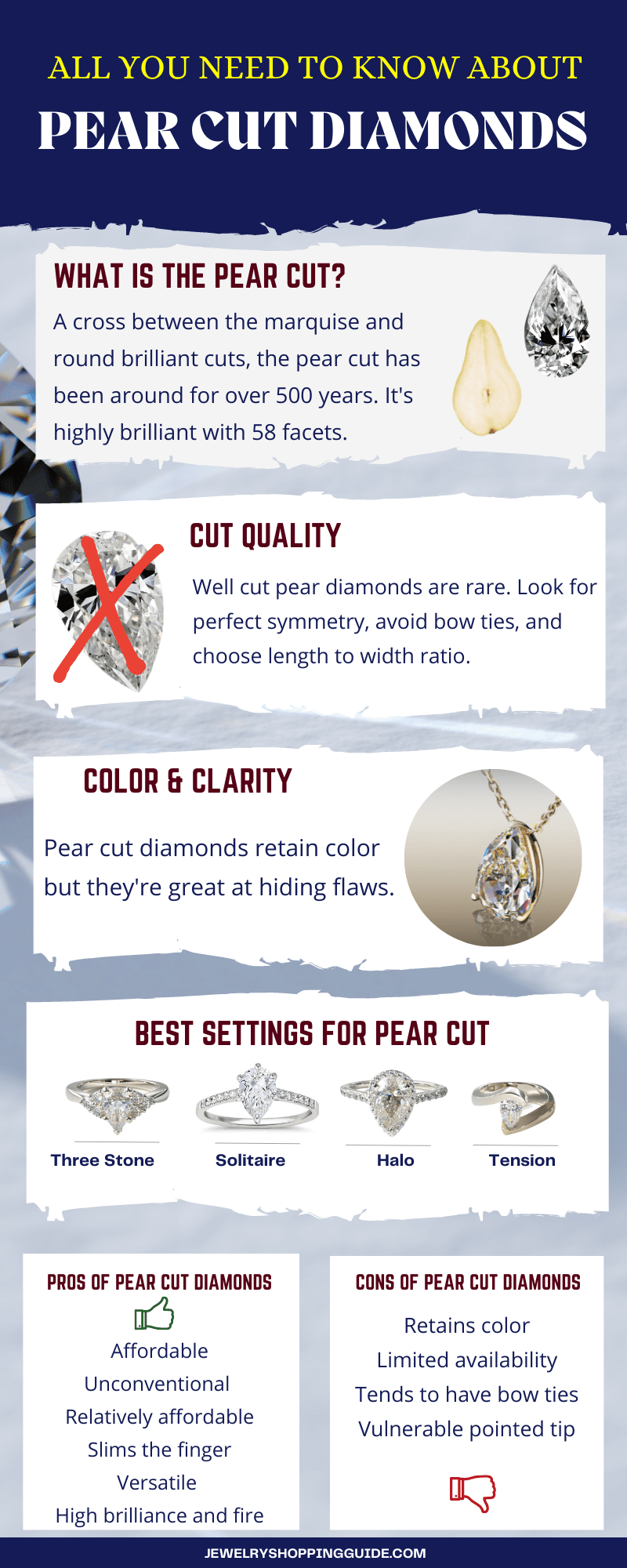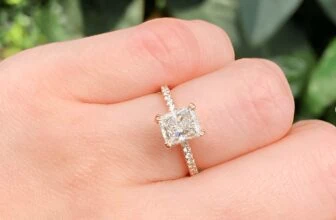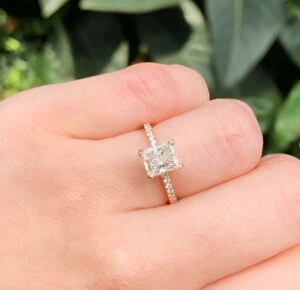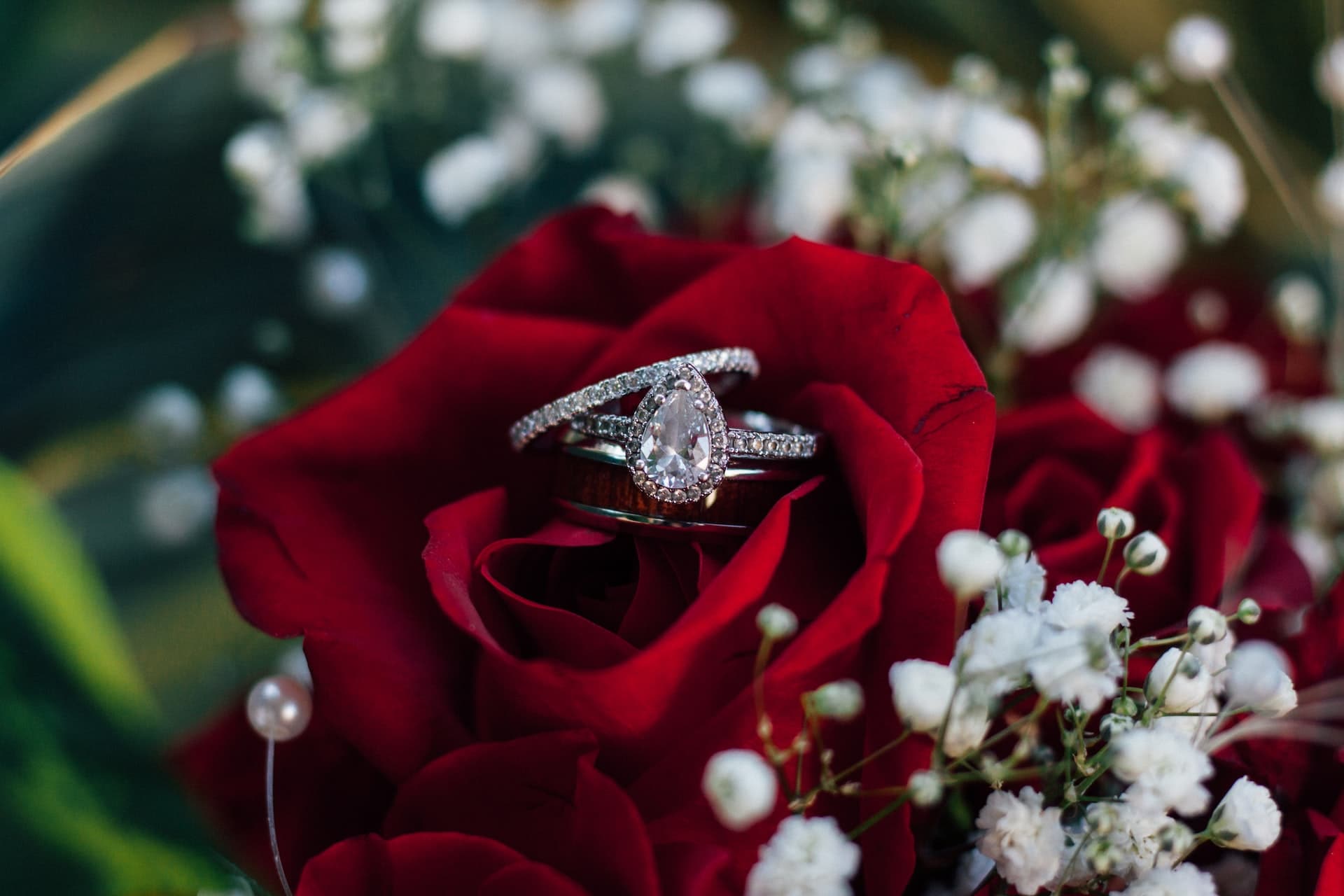
Table of Contents
One of the most brilliant of all the diamond shapes, the pear cut has a classic, unique look to it. Creating these diamonds require great skill, which is why it can be difficult to find a high-quality pear cut. Here is what you need to know when buying pear cut diamonds.
What is the Pear Cut Diamond?
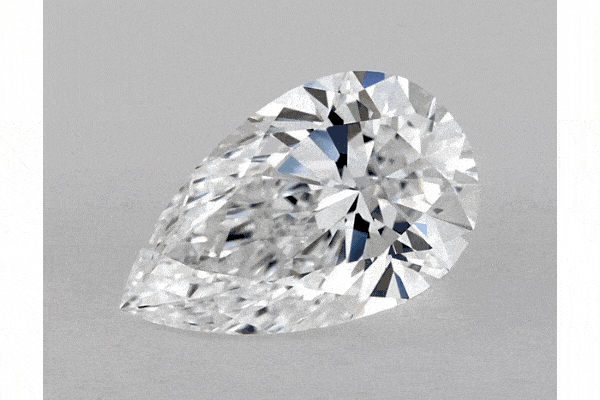
The pear-shaped diamond cut is a cross between the round brilliant and the marquise cuts, consisting of one curved and one pointed end. It has been around for about 500 years, making it one of the oldest of the diamond cuts.
The pear-shape (also called the teardrop shape) is often used as the side stones on an engagement ring, flanking the center stone. They are also a popular cut for pendants and drop earrings. However, when chosen for the center stone, the pear-shape diamond is unique, eye-catching and has a classical feel to it.
Consisting of 58 facets, the same number as the round brilliant cut, the pear cut has fantastic sparkle. In fact, it is the most brilliant of all the fancy cuts. In addition to this, pear-shaped diamonds elongate the fingers, and suits any hand shape.
Pros and Cons of the Pear Cut
As with all diamond cuts, the pear cut has both advantages and disadvantages. Here’s what to consider to see if it’s the right choice for you:
Look for Perfect Symmetry
When it comes to pear cuts, symmetry is critical! This can’t be emphasized enough. If you buy a pear cut diamond that is slightly wonky, it will show. The slightest difference will be noticeable. Look for Excellent or Very Good symmetry in a pear cut.
The symmetry will also depend on the length to width ratio of the stone, and whether you’re going for an elongated pear, like this stone, or a chunkier cut, like this pear cut diamond.
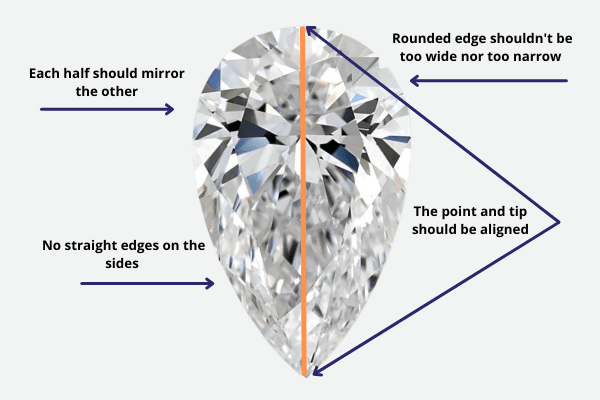
If divided down the center, each section of the pear should be a mirror image of the other. The point of the stone should align with the tip of the curved end.
There should not be any straight edges on the sides of the cut, which should gracefully curve towards the point. The rounded point should not be too wide, as this can cause it to have a triangular look, but it shouldn’t be too narrow either.
Choose the Length to Width Ratio
The ideal length to width ratio for the pear-shape is 1.50 to 1.75. Anything under 1.50 and the stone starts to look squat while anything over 1.75 will make the stone look too narrow and long.
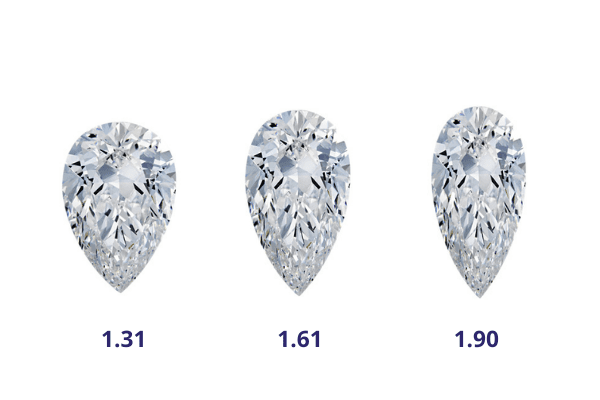
This is not to say that you shouldn’t choose a length to width ratio outside of 1.50 to 1.75. After all, it comes down to personal preference. For example, a long, narrow pear diamond suits drop earrings beautifully, while a more classical pear shape makes for an excellent center stone for an engagement ring.
Check for the Dreaded Bow Tie
A bow tie is the darkened section which lies across the middle of the diamond’s surface. This occurs when there is not enough light reflecting from the surface of the diamond and is caused by facets that are misaligned. The light travels through and out of the diamond, instead of being reflected back at the observer.
Pear shapes are susceptible to having a bow tie, ranging from being nearly undetectable to extremely severe. If the diamond has been cut expertly, with the facets aligned perfectly, then the bow tie will not be as visible.
However, if the bow tie is the first thing that catches your eye when you look at the stone, then it’s best to avoid it. As grading reports don’t mention bow ties, it’s imperative that you view the actual diamond prior to purchasing. Some retailers only provide a sample photo instead of videos and images of the actual diamond – this is risky when it comes to pear cut diamonds.
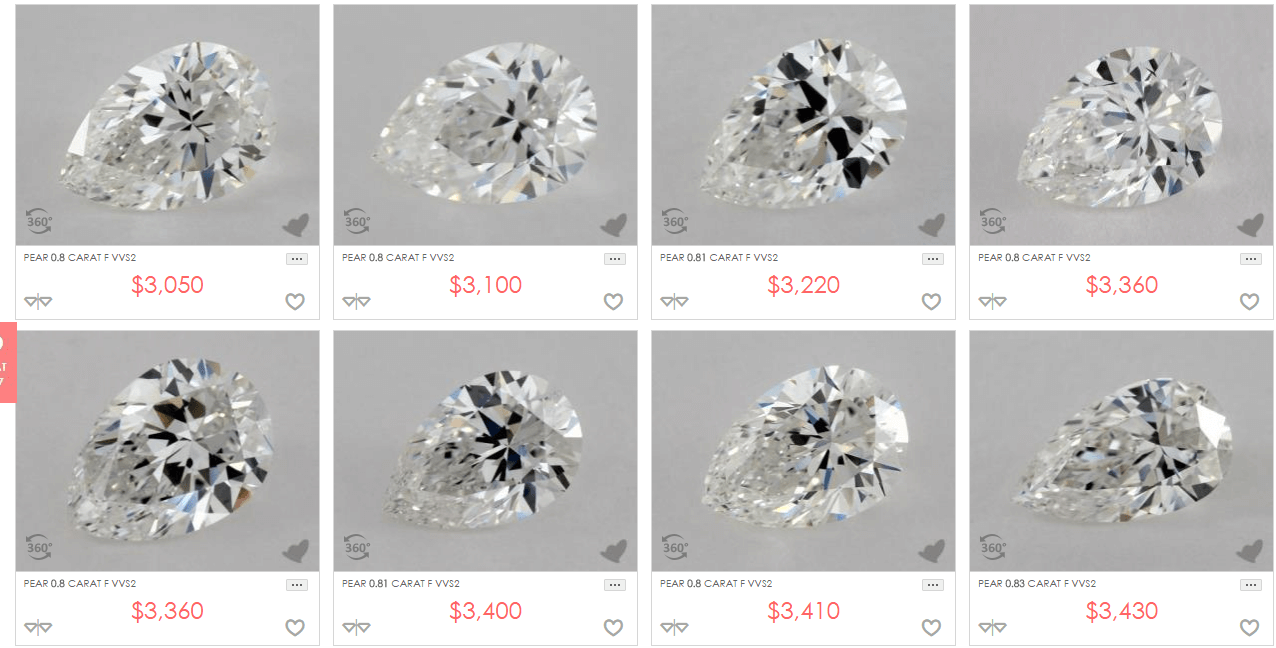
This is a screenshot of a selection of pear cut diamonds from James Allen. Although all the diamonds have similar specifications and prices, they all have varying degrees of bow tie, with the diamond third from the top left featuring the most severe bow tie. On paper, all these diamonds would seem nearly identical. By inspecting the diamonds, you can cherry pick the best.
Choose Your Setting to Protect the Pear Shape
Here are five different types of settings from James Allen. The six prongs in this first setting are set in pairs and appear like three large prongs. This is ideal for smaller pear shapes and offers very good protection for the point.
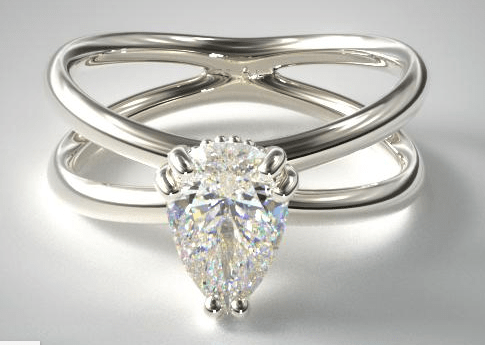
This 5-prong setting has a V-shaped tip that protects the point with all 5 prongs holding the diamond steadily in place.
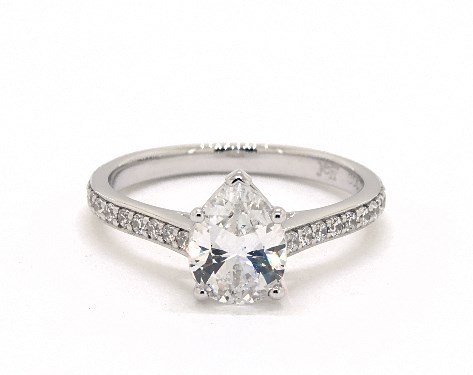
This is the common 6-prong setting for pear shapes. The bottom prong in this setting is wide enough to protect the point.
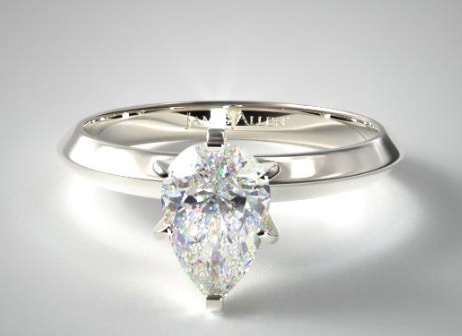
A halo setting offers protection all around the diamond and protects all the edges while adding an extra sparkle to the stone.
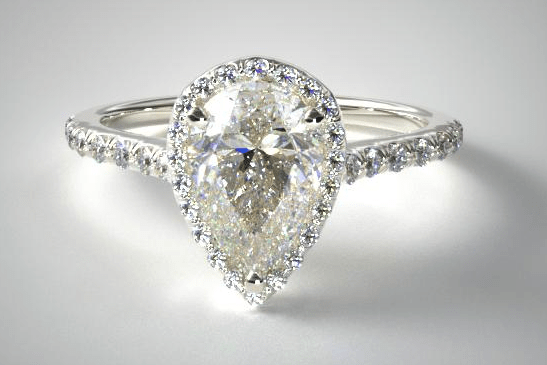
This tension setting is fairly uncommon for pear shapes. It is quite unique and eye-catching. While it’s not a classic choice, it’s perfect if you want something that’s modern and stands out. However, tension settings can pose some risks to the stone due to how exposed the diamond is.
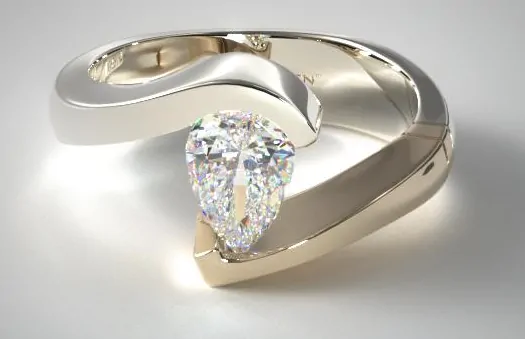
Pear shaped diamonds need to be placed in a protective setting, as you don’t want the pointed end to chip or get caught on fabric.
The best setting for pear cut diamonds is the six-prong setting. This has five prongs holding the diamond securely in place, while the sixth V-shaped prong protects the point.
A five-prong setting is also a secure choice, with just one prong less around the diamond. It is perfect for smaller stones.
Bezel and halo settings also provide ample protection for a pear cut diamond, as they provide a buffer around the diamond.
Regardless of the setting you decide on, just ensure that the diamond has a V-shaped or large bottom prong to protect the point.
What Style and Design Suit the Pear Diamond?
If choosing the style for an engagement ring, bear in mind that the pear cut is quite versatile. It works well with a variety of styles.
Because of its vintage appeal, the pear cut looks perfect when set in vintage designs, like this antique bezel and pave set ring.
For a more minimalist aesthetic, the pear cut looks stunning as a solitaire ring, taking pride of place in the center, like in this classic comfort fit solitaire ring.
If you want a elegant and eye-catching choice, consider a 3-stone pear design, where two diamonds flank a central pear stone, like this rose gold triple diamond engagement ring.
To recap, pear cut diamonds suit every style, whether modern or vintage.
Pick Your Color Grade

The pear cut is a shape that tends to show even the slightest color, so to avoid any yellow tints in the stone, you will need to select a color grade at the top of the near colorless range – consider G and better for optimal sparkle and fire.
Compare the three D, F, and H color diamonds below. The color difference is subtle but noticeable, especially between the H and D color stones.
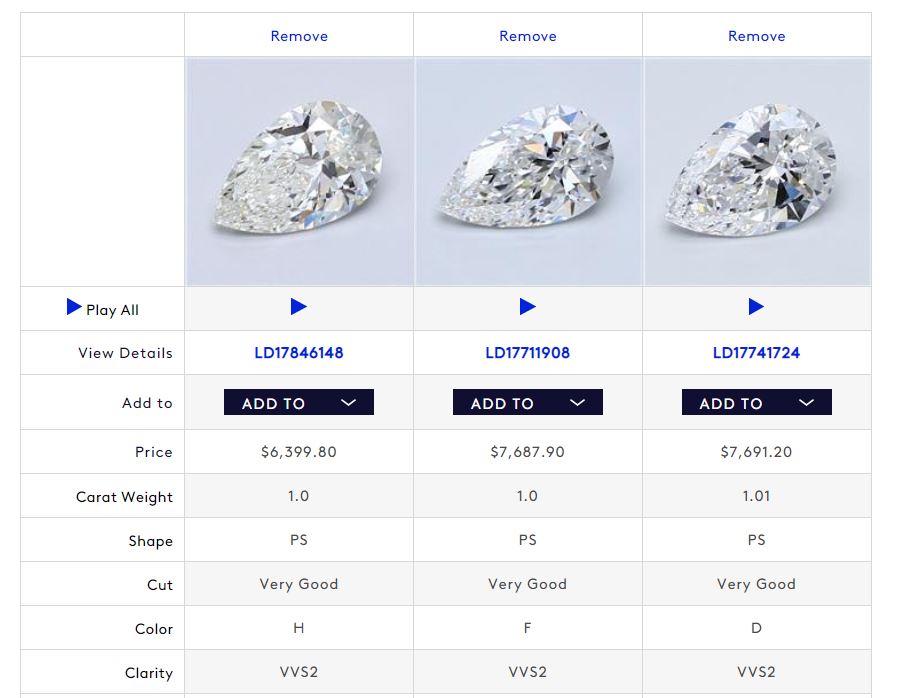
The bottom line? It’s best not to compromise too much on color, unless you’re going for a warm colored diamond.
However, this color recommendation is only applicable if you are choosing white gold, platinum, or other white metals. If you opt for yellow or rose gold metals, you can choose a slightly more tinted stone from grades H-K and still have a diamond that looks near colorless.
Choosing the Best Clarity Grade for Pear Cut
The pear cut is great at hiding inclusions. For shoppers, this means that you can drop down on the clarity scale without compromising on beauty.
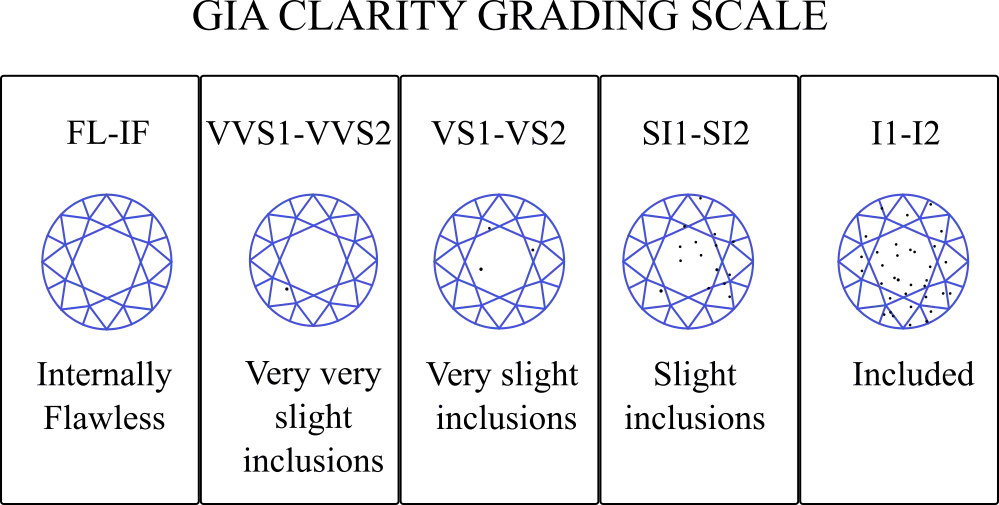
Choose from FL to VS2 for stones less than a carat. However, if you’re planning on picking a larger stone (1 carat and more) then it’s best to select between FL to VVS2. Inclusions will be more visible on larger stones so it’s best not to compromise on quality in this aspect. Ensure that you’re able to the stone in person or have access to high quality photos or videos of the stone to ensure that it is eye clean.
Where to Buy Pear Cut Diamonds Online

When purchasing diamonds online, look for retailers who have a solid track record, are specialized in what they do, and will provide you with certification.
Check that the certifying laboratory is reputable, such as GIA, AGS and EGL. The report should be complete with information on clarity, color, carat and cut. Also, remember that with pear-shaped diamonds, it is essential that you view the stone carefully before you buy it, to check for factors such as symmetry and bow tie.
There are several online vendors that offer high quality pear diamonds. We recommend the following stores for their excellent customer service, high-quality products, commitment to facilitating the online shopping process, and solid after sales policies.
Why: Superior diamond imaging, competitive prices, high quality, wide range
An online giant in the diamond space, James Allen a stunning collection of high-quality pear cut diamonds. The images and videos are unparalleled in quality and makes shopping online similar, if not better, to shopping in store.
Why: Competitive prices, wide range, great quality
Known for dominating the online diamond industry since the late 1990s, Blue Nile offers one of the largest online diamond inventories. Search pear cut diamonds here at competitive prices, solid after-sales policies, and great customer service.
Why: Superior cut quality, exclusive range, stunning designs
Whiteflash has earned an international reputation for the elite quality of their precision cut diamonds, and for their impeccable collection of designer engagement rings. Check their stunning range of diamond jewelry and loose diamonds. However, the diamonds come with a premium and not all diamonds have photos or videos.
Why: Impeccable quality, superior cut, small but exclusive inventory
Brian Gavin is a renowned expert in diamond cut – and it shows in their superior diamond quality. For the very best in diamonds, search their inventory of designer diamond jewelry and loose diamonds.
Why: Try before you buy, build your own ring, great quality
If you want to try out how a cushion cut diamond ring looks on your finger before you commit to buying one, check out With Clarity’s Home Preview Service which is completely free. Find out more here.
Check out our quick comparison of the top online engagement ring retailers for more information.
